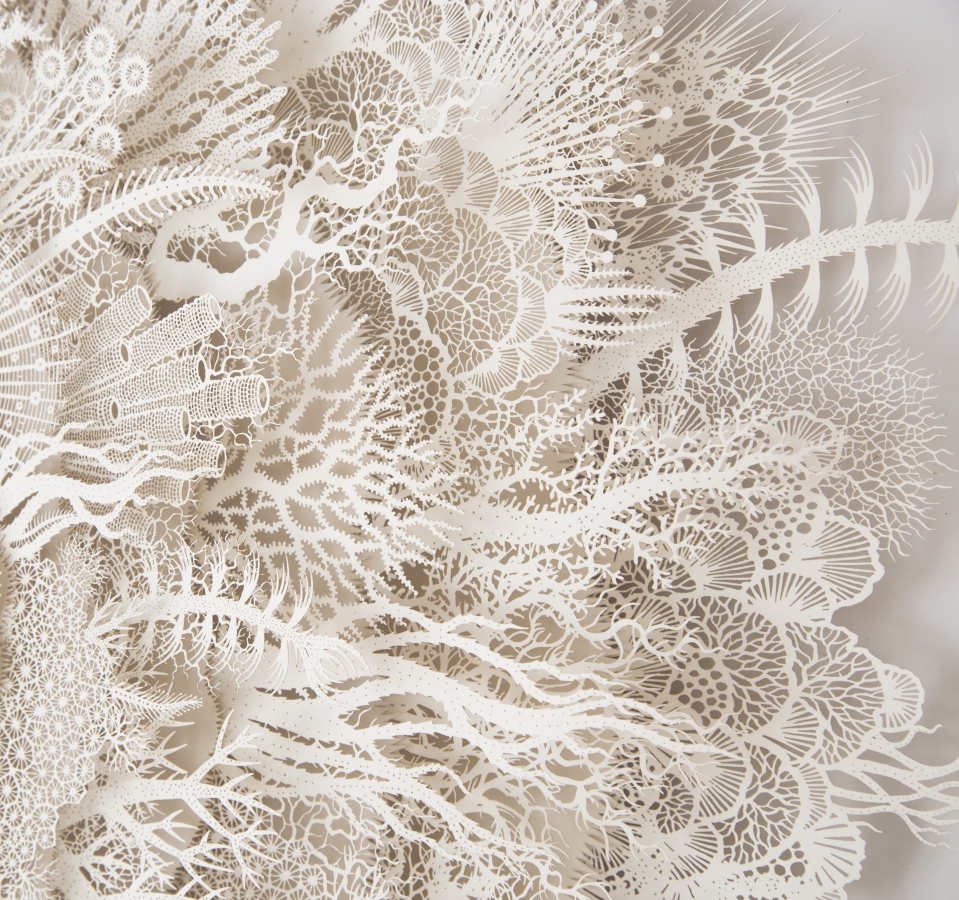
Interview with Rogan Brown

Where did you grow up? When did you first become interested in art?
I grew up in the UK in various places. I started to take art seriously at about the age of fourteen. It coincided with my discovery of the work of Francis Bacon; his paintings, so physical and visceral, so ugly and beautiful, captivated my teenage mind.
The way you make these paper sculptures using a fusion of handcrafting and technology is so unique. Can you walk us through your process? How long does it typically take to create a sculpture?
It’s difficult to say exactly how long each piece takes because there are many distinct stages to the process. Everything begins with drawing, intricate, and painstaking drawings first in pencil then in black ink. Those drawings are then vectorized and laser cut from sheets of paper. The process of laser cutting is slow because the drawings are so detailed. In a piece, for example, like Magic Circle with a diameter of 80 cms there are probably 2 full weeks of laser cutting with the machine running 8 hours a day. Those cuts are mounted into 3D elements thanks to hand cut 10mm foamboard spacers that separate each layer. The elements are then glued and pinned into a circular composition. Depending on size the sculptures take anywhere between 4 and 12 weeks
to complete.



Who are some of the artists, writers or musicians that have inspired you?
That’s not an easy question because I am passionate about art from every different epoch and in every different genre. But the artists who have had a direct impact on my aesthetic are those who are in some way inspired by or engaged with science. This of course begins with Leonardo Da Vinci in the Renaissance and the whole genre of detailed observational drawing that subsequently developed. I love the depiction of nature in the paintings of the Pre-Raphaelite Brotherhood (Millais, Holman Hunt, Inchbold) because it is so intricate and forensic in detail. I’m deeply inspired by Ernst Haeckel’s book “Art Forms in Nature” with its beautifully stylized but scientifically accurate representations of the microscopic world. I’d also mention surrealist art in all its manifestations and the strange transformation of the real world through the prism of the imagination that it celebrates. Finally, I’d cite the great Romantic visionary writer and artist William Blake (see below).
What do you believe is a key element in creating a good composition?
I don’t know. There is something mysterious in art, something that goes beyond rational comprehension and explanation, and which is therefore not susceptible to the development of a universal law.



What are the challenges you most often face during your work?
I work with a fragile material whose limits I am constantly pushing, trying to engineer ever greater levels of intricacy and complexity. Sometimes I go too far and when the work is transported and handled roughly, it breaks, and months of work are ruined. It happens rarely but when it does it is crushing. So, walking the fine line between fragility and durability is my greatest challenge.
What is your dream creative project?
My dream is to work at a much larger scale and to create pieces 3m wide and 2m high. It would be visually incredible but terrifyingly expensive to transport and exhibit. Maybe one day…





What are you doing when you are not creating? What hobbies do you have?
Hiking, reading, cooking, and drinking wine.
What are you working on now, and what are your future plans?
I’m working on a piece called “Quantum Cloud” which is an attempt to create an imaginative visualization of the world at the Planck scale, which is the smallest level of scale that physicists can theorize. It’s a bubbling, fizzing field of energy with particles bursting in and out of existence simultaneously.




Your favorite quote is …
“To see a World in a Grain of Sand
And a Heaven in a Wild Flower
Hold Infinity in the palm of your hand
And Eternity in an hour”
William Blake “Auguries of Innocence” 1803
Here Blake suggests that focused observation of the simplest aspects of nature can lead us to an understanding of the sublime vastness of the universe. Science achieves this too, cracking open the grain of sand to expose its molecular, atomic, and sub- atomic structure. I think art can do the same by taking us out of our habitual way of looking at the world and giving us the time and space for quiet contemplation.
Editor: Lisa Portscher
https://www.instagram.com/lisaportscher/


